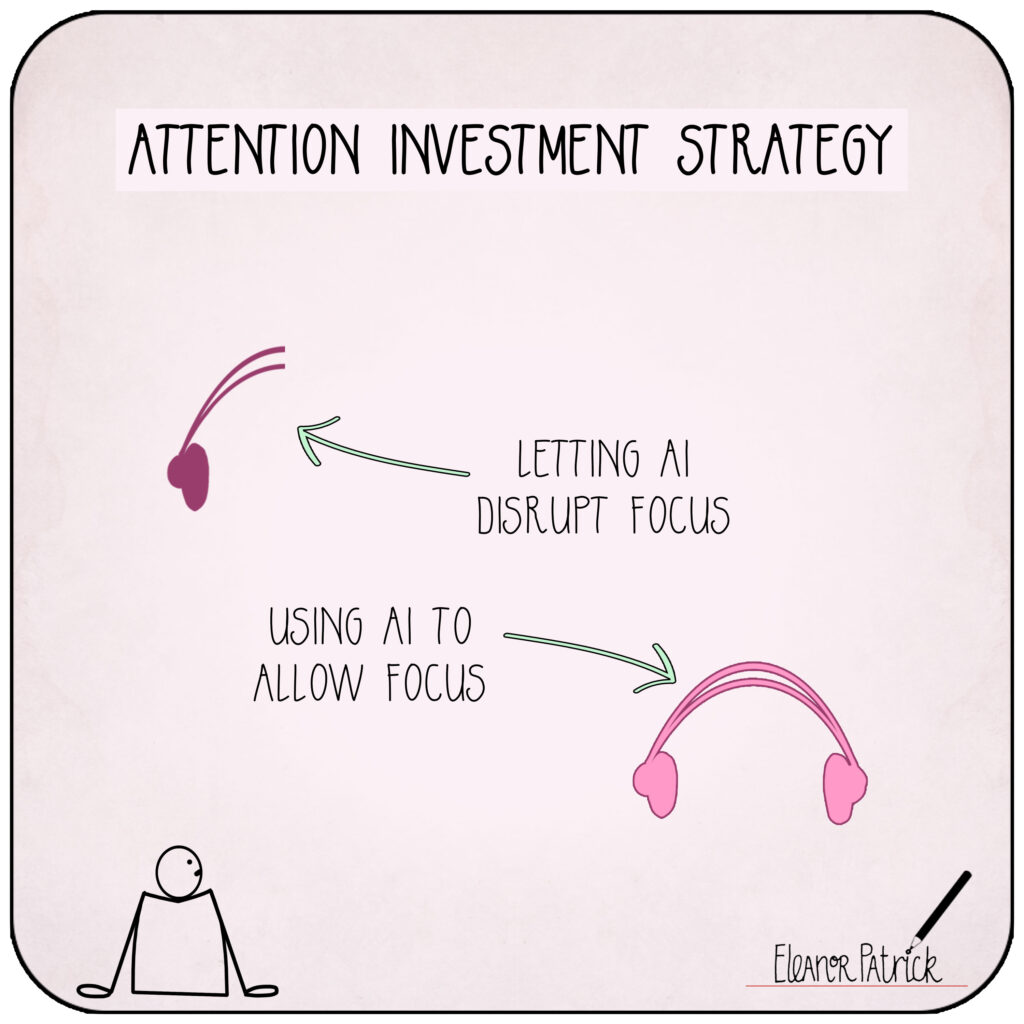
Day 06 — Attention Investment Strategy
The Core Concept
Your attention is your most valuable professional resource, and AI can either scatter it or focus it.
Mindless scrolling through AI-generated options, constantly switching between tools, or using AI to avoid thinking altogether are “attention drains.”
Conversely, using AI to handle routine tasks so you can focus deeply on strategic work, or to quickly research so you can spend more time on creative synthesis, are “attention investments.”
The key is consciously directing AI to protect and focus your mental energy.
The Metaphor: The Attention Portfolio
Think of your daily attention like an investment portfolio.
Some investments (deep work, strategic thinking, relationship building) have high returns but require sustained focus.
Others (email management, data formatting, routine research) are necessary but low-return activities.
AI is like having a financial advisor who can handle the routine portfolio management, freeing you to focus on the high-value investment decisions.
The goal is to maximize the return on your attention investment.
The Professional Story
Every day, Mark felt mentally scattered. He’d spend 30 minutes researching industry trends, another 20 minutes formatting presentations, then jump to email management, followed by strategic planning.
His attention was fragmented across high and low-value activities. He was managing his attention portfolio poorly.
He redesigned his approach using AI as his “attention advisor.”
He batched all his routine research requests to AI at the start of the day, getting comprehensive briefings in 10 minutes instead of scattered 30-minute sessions. He used AI to handle email drafting and formatting tasks.
This freed up solid blocks of time for the high-attention work that really mattered: strategic analysis, client relationship building, and creative problem-solving.
His work quality increased while his mental fatigue decreased. He had learned to invest his attention, not just spend it.
Try This Today
1. Attention Audit: Track where your attention goes for half a day. Mark activities as either “High Return” (strategic, creative, relationship) or “Necessary but Low Return” (routine, administrative, formatting).
2. Identify Attention Drains: Which low-return activities currently fragment your ability to focus on high-return work?
3. Make One Attention Investment: Use AI to handle one routine task today, and consciously invest the saved time into a high-return activity. Notice the quality difference in your deep work.
Daily Integration Phrase:
“I invest my attention where it creates the most value.”
 ContentFirst Marketing
ContentFirst Marketing